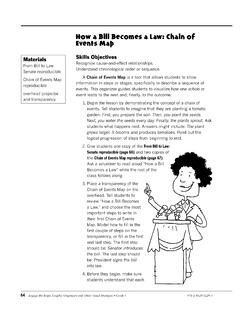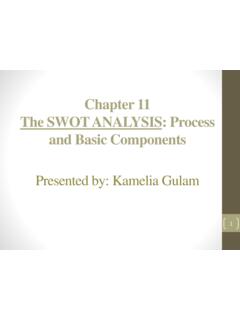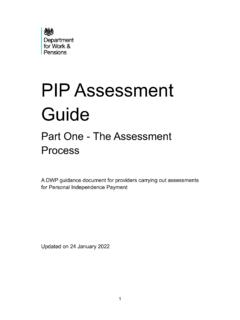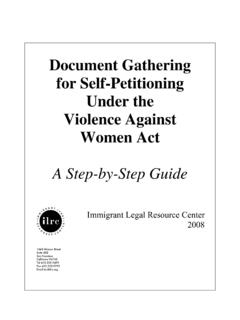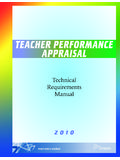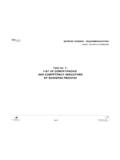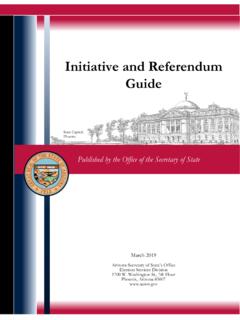Transcription of Overview of the Action Research Process
1 CHAPTER 2 Overview of theAction Research Process29 ActionResearchNine steps to provide guidanceCyclical, not linear, processObserve .. do .. observe .. adjust .. do againSteps may be skipped orrearranged, if appropriate Identify and limit the topic Gather information Review the related literature Develop a Research plan Implement the plan and collect the data Analyze the data Develop an Action plan Share and communicate the results Reflect on the Research processAction Research stepsCHAPTERIn Chapter 1, the general Process of conducting Action Research was briefly introduced as a four-stageprocedure.
2 To reiterate, these four stages are:1. The planning stage2. The acting stageChapter 2 Organizer02-Mertler ( Action )-45613:02-Mertler ( Action )-45613 6/7/2008 3:39 PM Page 293. The developing stage 4. The reflecting stageHowever, it is critical at this time that we begin to examine the specific steps of conducting an actionresearch study. The focus of this chapter is to introduce the nine specific steps that comprise the processof Action Research . These steps will then be detailed across Chapters 3 through 8. The nine steps in theprocess (followed parenthetically by the chapters where they are addressed in this book) are as follows:1.
3 Identifying and limiting the topic (Chapter 3)2. gathering information (Chapter 3)3. Reviewing the related literature (Chapter 3)4. Developing a Research plan (Chapter 4)5. Implementing the plan and collecting data (Chapter 5)6. Analyzing the data (Chapter 6)7. Developing an Action plan (Chapter 7)8. Sharing and communicating the results (Chapter 8) 9. Reflecting on the Process (Chapter 8)Upon comparing the general four-stage procedure with the nine specific steps, you probably will notfind it too difficult to see how the two fit together (see Figure ). Stage 1 (the planning stage) is composedof Steps 1, 2, 3, and 4 since these are planning activities done prior to the implementation of the 2 (theacting stage) is composed of Steps 5 and 6, where the Action researcher implements the planand then collects and analyzes the data.
4 Step 7 is, in essence, its own stage, namely Stage 3 (thedevelopingstage). This is the step where the revisions, changes, or improvements arise and future actions (known asan Action plan ) are developed. Finally, Stage 4 (thereflecting stage) is composed of Steps 8 and 9; theaction researcher summarizes the results of the study, creates a strategy for sharing the results, and reflectson the entire Process . It is important to mention that you will see variations of Figure near the begin-ning of each of Chapters 3 through 8, with the specific step or steps being addressed in that particularchapter highlighted in the is critical at this point to reiterate the fact that Action Research , contrary to the way it is depicted inFigure , is not a linear Process (the purpose of Figure is merely to show the relationship between thetwo schemes for summarizing the Action Research Process ).
5 Action Research has historically been viewedas cyclical in nature (Mertler & Charles, 2008). That is to say, whereas Action Research has a clear beginning,it does not have a clearly defined endpoint. Ordinarily, teacher-researchers design and implement a project,collect and analyze data in order to monitor and evaluate the project s effectiveness, and then makerevisions and improvements to the project for future implementation. In all likelihood, the project wouldthen be implemented again perhaps with next semester s or next year s students when theeffectiveness of the revisions would be monitored and evaluated, with new improvements developedfor the next phase of implementation.
6 One may be able to see that a given project may never have a clear30 PART I WHAT IS Action Research ? 02-Mertler ( Action )-45613:02-Mertler ( Action )-45613 6/7/2008 3:39 PM Page 30end the teacher may continue to go through subsequent cycles of implementation, evaluation, andrevision, spiraling from one semester or year to the next (Mertler & Charles, 2008). Parsons and Brown(2002) describe the Process as one of observing-doing-observing-adjusting and then doing it again(p. 8). The Process of Action Research , with its cyclical and spiraling nature, is portrayed in Figure we begin to examine the nine specific steps in greater detail, Johnson (2008) reminds us that thesesteps are meant to serve as guidelines in conducting Action Research projects.
7 They must be adapted toa particular Research problem or topic. Furthermore, the steps themselves should not necessarily be seenas cast in stone. If and where appropriate, teacher-researchers may find themselves skipping steps,rearranging their order, or repeating some steps more than once (Johnson, 2008). Action Research can takeon many forms, thus employing a wide range of methodologies. The key to worthwhile teacher-conductedaction Research rests in the questions addressed by the project and the extent to which the results aremeaningful and important to that teacher (Parsons & Brown, 2002)
8 And not necessarily in the means bywhich those results were 2 Overview of the Action Research Process 31 Action ResearchActingStage PlanningStageDevelopingStage Identifying and limiting the topic gathering information Reviewing related literature Developing a Research plan Collecting data Analyzing data Developing an Action plan Sharing and communicating results Reflecting on the processReflectingStageFigure of Two Organizational Schemes for the Step-by-Step Processof Action Research02-Mertler ( Action )-45613:02-Mertler ( Action )-45613 6/7/2008 3:39 PM Page 3132 PART I WHAT IS Action Research ?
9 Step 1: Identifying and Limiting the TopicThe first step in any Research study is deciding exactly what to study. Since personal and professionalexperiences are so central to teacher-initiated Action Research , possible topics for investigation might beanything about which you are curious, that piques your interest, or that intrigues you in any , you are looking to identify some topic that you would genuinely like to examine in depth(Johnson, 2008). It is important to remember that the goal of any Action Research project is a desire to makethings better, improve some specific practice, or correct something that is not working as well as it should(Fraenkel & Wallen, 2003).
10 These goals must be kept in mind when initially identifying, and laternarrowing the focus of, the addition, in order to investigate a topic for Action Research , it must be manageable (Fraenkel &Wallen, 2003). With all due respect, large-scale complex issues and Research projects are probably betterleft to professional researchers. Action Research studies designed and conducted by classroom teachersshould take into consideration such things as the time requirements (or restrictions), the data collectionand analysis skill levels of the individual(s) conducting the Research , and any budgetary limitations.
